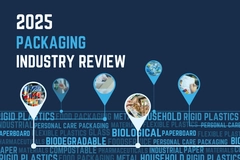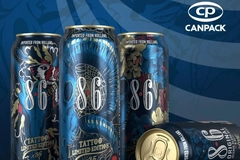PackSure launches beverage pack testing lab for improved resilience and circularity
PackSure has opened what it says is the drink industry’s first testing lab to test existing and new packaging materials in Stirling, Scotland.
The facility was awarded £200,000 (US$260,000) from the government agency Scottish Enterprise as part of the Green Jobs Funding Scheme. The funding initiative aims to support businesses in creating and maintaining jobs that improve the environment and align with the Scottish Government’s net zero policies.
Brian McCready, lab manager at PackSure, tells Packaging Insights that the most effective way to ensure that packaging is fit for purpose is to involve the testing lab “as early as possible” in the development cycle.
“This ensures that designs or materials will work rather than wait until the end to find out that they don’t.”
“It’s far more cost effective to find out early that things don’t work and can be developed than to find out too late where large recalls or reworks are involved,” adds McCready.
Design is key
McCready says that being able to test new designs and specifications before products are placed on the market gives brands and companies the “peace of mind” that their product packaging is fit for purpose and can significantly boost the use of more sustainable materials.
“[Design in the drink packaging industry] is extremely crucial, particularly as the world is moving more to e-commerce type sales where individual products are shipped to customers in various challenging environmental conditions.”
 Scotch whisky is exported to over 200 markets globally, showing its necessity for thorough testing.Packsure typically test containers such as bottles and boxes, says McCready. “These are usually made from glass and plastic but we test products made from paper, solid board and corrugated materials. We are not limited to these materials and can test a variety of materials in our climatic and vibration machines.”
Scotch whisky is exported to over 200 markets globally, showing its necessity for thorough testing.Packsure typically test containers such as bottles and boxes, says McCready. “These are usually made from glass and plastic but we test products made from paper, solid board and corrugated materials. We are not limited to these materials and can test a variety of materials in our climatic and vibration machines.”
Scotch whisky climatic testing
Scotland’s premier whisky sector is currently undergoing green packaging upgrades. For instance, Diageo recently piloted a “first of its kind” 90% paper-based bottle for Johnnie Walker Black Label exclusively at the whiskey label’s 1820 Rooftop Bar on Princes Street in Edinburgh.
Addressing this trend, PackSure investigates the R&D phase of new materials, designs and finished products. At the new site, it measures the performance of new and existing specifications, manages risks and develops solutions to accelerate the transition to more environmentally friendly solutions.
Scotch whisky is exported to over 200 markets globally, and its packaging is exposed to a broad range of environmental conditions en route to market.
“Probably the most popular service is climatic testing,” says McCready. “We can simulate all conditions, from Nordic cold to the tropical climates of Asia. No matter where your product is shipped, we can accurately track any changes that might affect your packs in transit and on the shelf in a specific market and prepare a fully confidential report.”
Ensuring lifecycle quality  PackSure does drop tests to ensure packaging resilience and product protection (Image credit: PackSure).
PackSure does drop tests to ensure packaging resilience and product protection (Image credit: PackSure).
PackSure is a member of the International Safe Transit Association (ISTA) and the British Standards Institution (BSI), giving access to package design and testing tools, vast amounts of industry research and various UK-specific and global industry testing standards.
The laboratory’s recently gained ISTA certification allows it to offer the certification to customers selling products through third-party online retailers or directly to consumers via their web stores. ISTA certification is a recognized standard for transit trialing by many online retailers.
Jan Grochowski, laboratory technician, says: “Whether you are working on new product development, or your product has been on the market for years, it can be worth testing the packaging throughout its lifecycle.”
“Testing ensures that it [packaging] can withstand the demands of its supply chain, environmental conditions and handling while meeting the high standards expected by the premium and luxury drinks sector. We encourage customers to visit the site in the Central Belt to see the testing results first-hand and discuss the next steps.”












